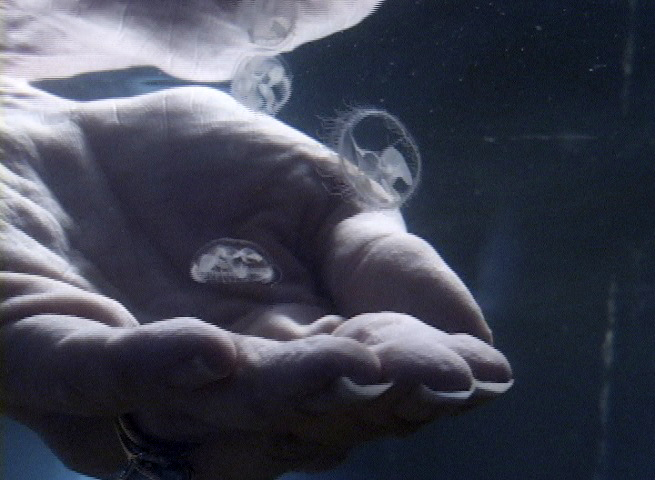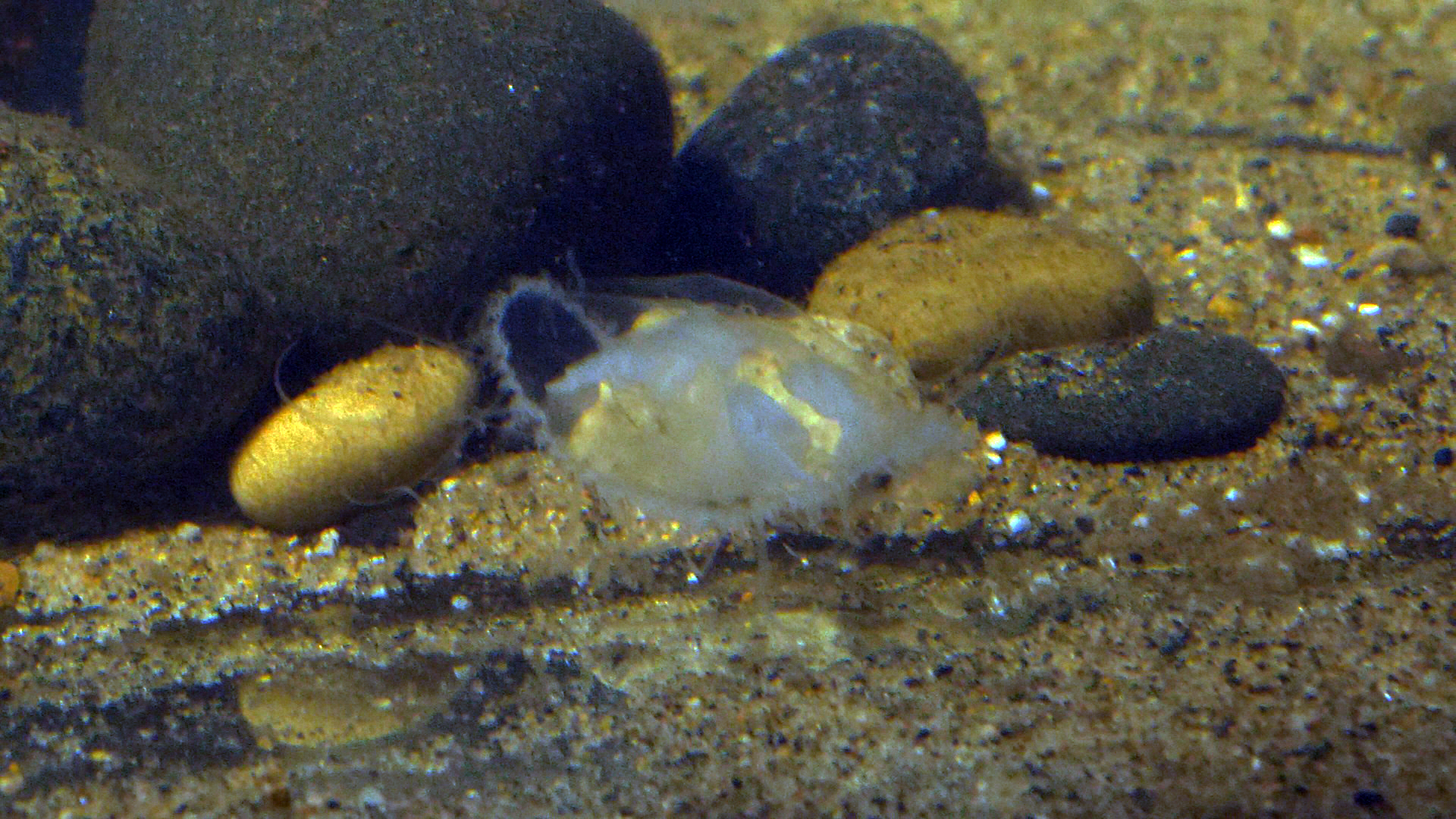
 I Speak for the Fish is a monthly column written by Great Lakes Now Contributor Kathy Johnson, coming out the third Monday of each month. Publishing the author’s views and assertions does not represent endorsement by Great Lakes Now or Detroit Public Television. Check out her previous columns.
I Speak for the Fish is a monthly column written by Great Lakes Now Contributor Kathy Johnson, coming out the third Monday of each month. Publishing the author’s views and assertions does not represent endorsement by Great Lakes Now or Detroit Public Television. Check out her previous columns.
It feels like an understatement to say they are rare.
We had only seen and filmed them once in the last 30 years.
If we needed to film some for a project, we could probably find them somewhere in the Great Lakes but it would require a major investment of time, networking, gasoline, and hotel rooms. Plus a pound of good luck.
They are so rare that when the Michigan Department of Natural Resource published a fact sheet earlier this year, they included one of our 30-year-ago images.
We’re always happy to support the Michigan DNR but in this case, we felt obliged since the only reason we have those images is because Mike Thomas, a research biologist at the Mt. Clemens Fishery Station called us one day and asked a no-brainer question.
“Wanna see some jellyfish?”
Jellyfish?! Here?! Yes, please!!
Our gear was loaded and our wheels were spinning in record time.
Blooming Jellies

Jellyfish. (Photo Credit: Greg Lashbrook/PolkaDot Perch)
The road that runs along Anchor Bay on the northwestern shore of Lake St. Clair is lined with marinas, boat launches, boat storage facilities, boat-themed bars, yacht clubs, sailing clubs, gas docks and restaurants with dockage.
There are hundreds if not thousands of boat wells.
But in one well, in the back corner of a super-sized marina, the owner of a small sailboat returned to find the water filled with tiny jellyfish! He immediately reported it to the DNR Fishery Station.
Mike took the call and reassured the boat owner that it was not a new invasive species.
While not native to North America, freshwater jellyfish are long-term residents, having been in this country for well over a hundred years. They can be found across the continent in every type of freshwater from ponds, streams, rivers, and lakes to quarries and reservoirs.
Freshwater jellyfish are completely harmless. Their presence has no adverse impact on fish or people or ecosystems.
Their tiny umbrella-ed bodies range in size from a dime to a quarter, at the largest. They remind me of plastic water bottle caps.
Mike had given us the marina name and boat well number.
We walked down the maze of docks checking every well we passed. Dozens and dozens with no sign of anything resembling a jellyfish. If it were anyone but Mike, we might have wondered if we were getting punked.
Or maybe the jellies were there and we just didn’t know how to spot them.
Our jaws nearly hit the wooden walkway when we reached the designated well. There was no missing them. The rectangular block of water was literally filled with pulsating quarter-sized dots.
Their translucent white bodies popped and glowed in the dark brown water. They appeared as little white circles from one angle and small nearly-transparent spheres from another.
Although the dirty harbor water limited us to macro photography, we still spent hours filming them.
Interestingly, nothing prevented them from leaving the boat well, including the water which at the rear of the marina was stagnantly still. Yet, the jellies never spread beyond that one boat well and after a few days they seemed to disappear as suddenly as they appeared.
Apparently, when and where freshwater jellyfish will blossom next is anyone’s guess.
Large groupings of jellyfish are called blooms. In freshwater, blooms are thought to be temperature dependent, requiring at least 77 degrees which explains why it’s usually late August before they appear here.
Their preference for very warm water is one of the reasons they are more commonly seen in shallow, quiet water. But even then, they’re rare.
That single Anchor Bay boat well was the only spot in the area where jellyfish were reported that season. And for the next few years we checked but they never appeared in that spot again.
Spreading Jellies

Jellyfish in the water. (Photo Credit: Greg Lashbrook/PolkaDot Perch)
Jellyfish arrived from Asia in the late 1800s, likely with shipments of ornamental aquatic plants like water hyacinth.
The first reported sighting in the United States was in 1880. The first documented sighting in Michigan occurred in 1933 in the Huron River in the southeast part of the state.
Freshwater jellyfish are not true jellyfish since they have a membrane called a velum which marine species do not have. The velum is like an extra muscle that helps them move. But otherwise, freshwater jellies look and act just like miniaturized versions of real jellyfish.
The freshwater jellies’ life cycle has three stages: egg, polyp and medusa.
The polyp stage lasts the longest. Polyps are able to overwinter by contracting into dormant balls surrounded by a protective membrane that helps them survive in ice-covered lakes when water temperatures hover around freezing.
In the spring, when the conditions become more favorable, the polyps continue the life cycle with asexual reproduction.
By late summer, the polyps transition into the medusa stage which is when they resemble true jellyfish.
Crayfish are their only real predators, during the medusa phase.
Each freshwater jellyfish is rimmed with 50 to 500 varying length tentacles which serve multiple functions. The shorter ones catch and kill prey, which is mostly zooplankton. The longer tentacles provide stability for swimming.
Although their sting is lethal to macroinvertebrates, their stingers are not large enough or powerful enough to penetrate human skin.
Streaming Jellies

Livestream jellyfish. (Photo courtesy of Kathy Johnson)
Since freshwater jellyfish are known to prefer warm, slow-moving water, the very last place I ever expected to see them was in a big, fast moving river like the St. Clair.
This time it was our dive buddy Adam Lintz who called.
“Just a heads up, there’s a ton of jellyfish in the river.”
Thinking he must be diving in Algonac where the river slowed down considerably before entering Lake St. Clair, we asked where he saw them.
We could not believe it when he said he saw them on a drift dive under the Blue Water Bridges and they were “everywhere!”
We set a new record getting to the river.
They weren’t everywhere in the sense that we were not swimming through clouds of them. It took a bit of looking to spot their nearly translucent quarter-sized bodies because there are always lots of particles, like seaweed bits, blowing past us in the current.
Making it more difficult, their delicate bodies were all misshapen by the maelstrom of the river –like umbrellas caught in a hurricane.
But once we started spotting them it was like, there’s one and there’s one over there. And there’s another over there. And up there. And yeah, kinda everywhere.
We dove and filmed and dove and filmed. And dove and filmed until our dive computers insisted we take a break.
Normally, our observations and filming end with dives but not anymore.
This summer we launched a livestream camera in the St. Clair River. And we are genuinely amazed at the things we’re seeing. Highlight reels featuring the best moments from each week are on the PolkaDot Perch YouTube channel for those who miss it live.
I never would have imagined that cormorants liked corn on the cob!
When we got home from diving, we immediately turned on the livestream.
Knowing the jellyfish were there and even knowing what to look for, they were still hard to spot. Thankfully, every few minutes one got blown close enough to the camera to be clearly visible.
But blink and you missed it.
It only took a portion of a second for them to traverse the width of our TV screen, so we had to watch very carefully. We kept our vigil until the underwater lights turned off for the night.
The next morning, we were shocked to see jellies still streaming past the camera. So, we dove and filmed and dove and filmed some more.
We repeated this for the next six days!
Yes, for six days jellyfish streamed down the upper St. Clair River!!
It is unusual for them to be in such a high flow river. But it’s not unprecedented.
The quantity required to be continually visible in such a huge volume of water as passes through the upper St. Clair every single second was more noteworthy.
How big would the bloom in lower Lake Huron have to be for them to be visible in the river all day long? A hundred thousand jellyfish? Half a million?
Now multiply that by six and this bloom becomes remarkably unprecedented.
As water temperatures continue to rise from global warming, perhaps large jellyfish blooms will switch from being a rare sight to a common phenomenon. In which case, it’s good to be a crayfish.
Catch more news at Great Lakes Now:
I Speak for the Fish: Mesmerized by minnows
I Speak for the Fish: Giddy up sucker
Featured image: Jellyfish in hand. (Photo Credit: Greg Lashbrook/PolkaDot Perch)
2 Comments
-
You’ve crafted another wonderful story Kathy. Kudos!
-
I have seen jellyfish while I was swimming in Little Grassy lake in southern Illinois. I was surprised to see them,I couldn’t figure how they stayed alive in fresh water. I quit telling people about them because no one believed me! I was so glad to read this article about them. It proves I wasn’t hallucinating!




